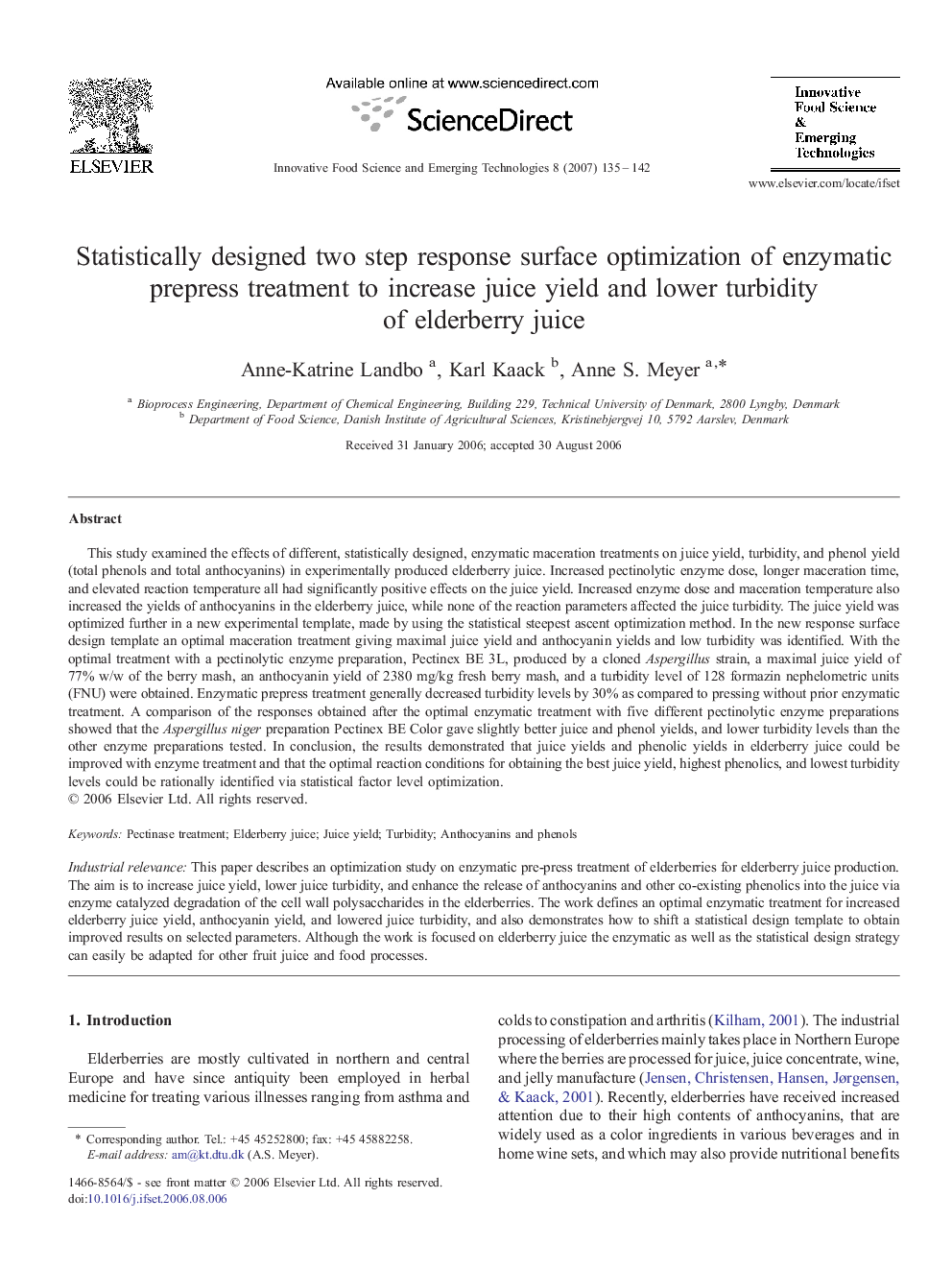| کد مقاله | کد نشریه | سال انتشار | مقاله انگلیسی | نسخه تمام متن |
|---|---|---|---|---|
| 2087465 | 1080647 | 2007 | 8 صفحه PDF | دانلود رایگان |

This study examined the effects of different, statistically designed, enzymatic maceration treatments on juice yield, turbidity, and phenol yield (total phenols and total anthocyanins) in experimentally produced elderberry juice. Increased pectinolytic enzyme dose, longer maceration time, and elevated reaction temperature all had significantly positive effects on the juice yield. Increased enzyme dose and maceration temperature also increased the yields of anthocyanins in the elderberry juice, while none of the reaction parameters affected the juice turbidity. The juice yield was optimized further in a new experimental template, made by using the statistical steepest ascent optimization method. In the new response surface design template an optimal maceration treatment giving maximal juice yield and anthocyanin yields and low turbidity was identified. With the optimal treatment with a pectinolytic enzyme preparation, Pectinex BE 3L, produced by a cloned Aspergillus strain, a maximal juice yield of 77% w/w of the berry mash, an anthocyanin yield of 2380 mg/kg fresh berry mash, and a turbidity level of 128 formazin nephelometric units (FNU) were obtained. Enzymatic prepress treatment generally decreased turbidity levels by 30% as compared to pressing without prior enzymatic treatment. A comparison of the responses obtained after the optimal enzymatic treatment with five different pectinolytic enzyme preparations showed that the Aspergillus niger preparation Pectinex BE Color gave slightly better juice and phenol yields, and lower turbidity levels than the other enzyme preparations tested. In conclusion, the results demonstrated that juice yields and phenolic yields in elderberry juice could be improved with enzyme treatment and that the optimal reaction conditions for obtaining the best juice yield, highest phenolics, and lowest turbidity levels could be rationally identified via statistical factor level optimization.Industrial relevanceThis paper describes an optimization study on enzymatic pre-press treatment of elderberries for elderberry juice production. The aim is to increase juice yield, lower juice turbidity, and enhance the release of anthocyanins and other co-existing phenolics into the juice via enzyme catalyzed degradation of the cell wall polysaccharides in the elderberries. The work defines an optimal enzymatic treatment for increased elderberry juice yield, anthocyanin yield, and lowered juice turbidity, and also demonstrates how to shift a statistical design template to obtain improved results on selected parameters. Although the work is focused on elderberry juice the enzymatic as well as the statistical design strategy can easily be adapted for other fruit juice and food processes.
Journal: Innovative Food Science & Emerging Technologies - Volume 8, Issue 1, March 2007, Pages 135–142